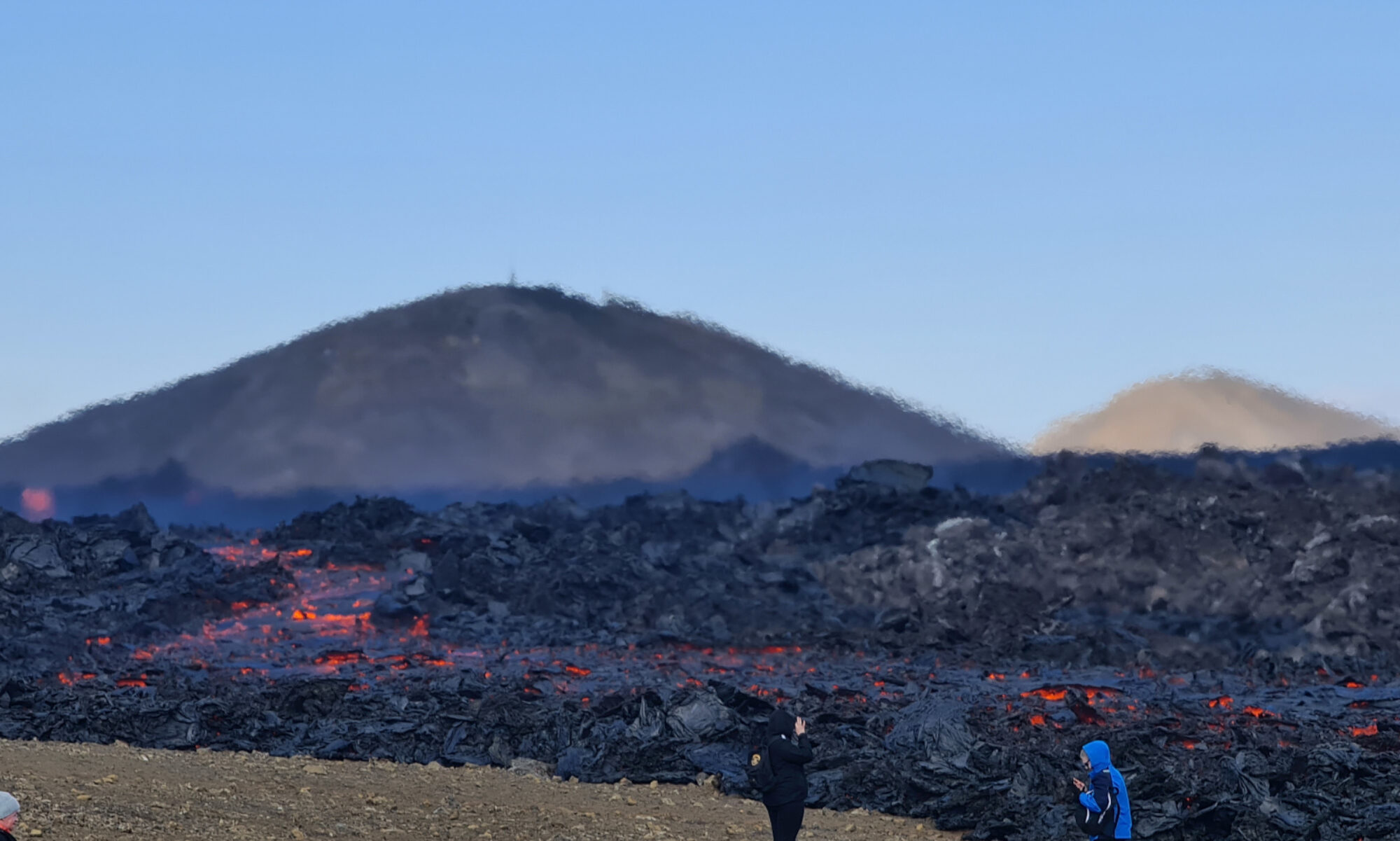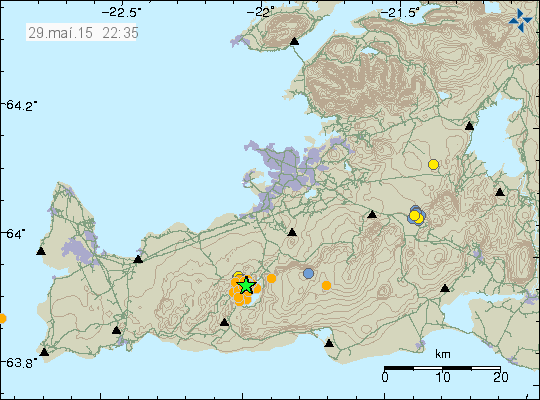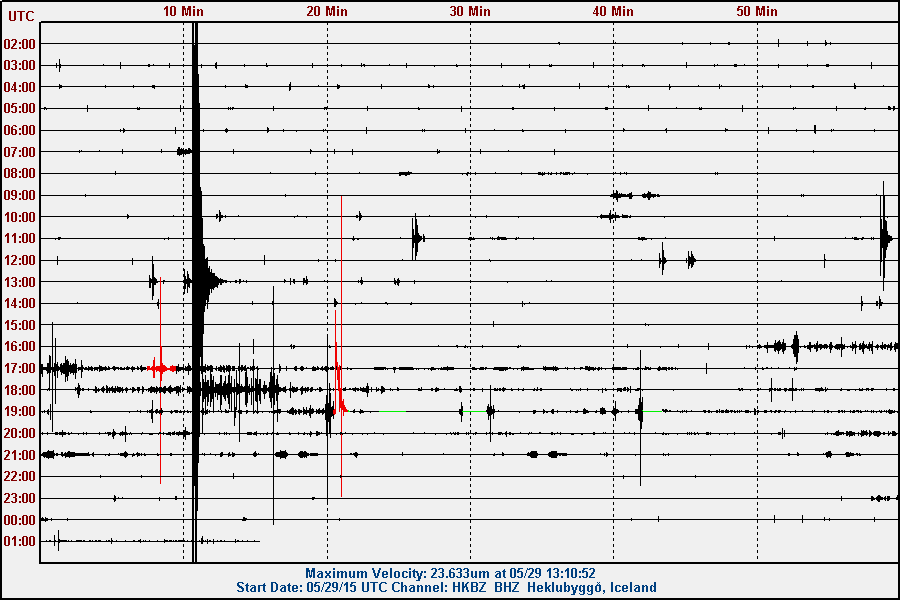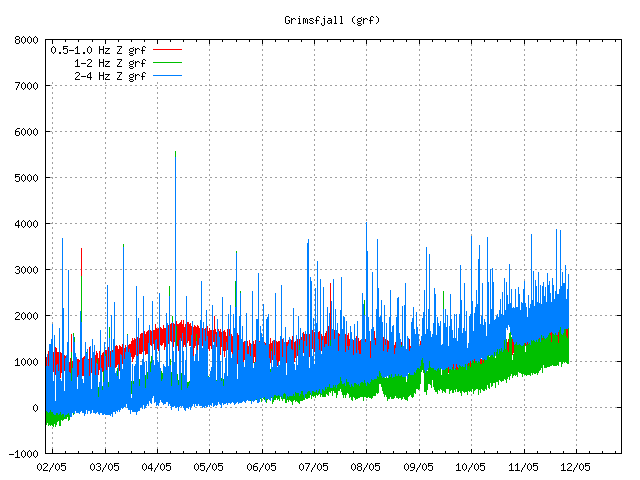During Week 23 there hasn’t been a lot of activity taking place. Normal minor-earthquake activity has been taking place all over Iceland, some glacier earthquakes have been seen in Vatnajökull glacier. This spread out earthquake activity is normal for Iceland, it is also easily detected in Iceland due to the dense seismometer network in Iceland. Earthquake activity continues in Bárðarbunga volcano.
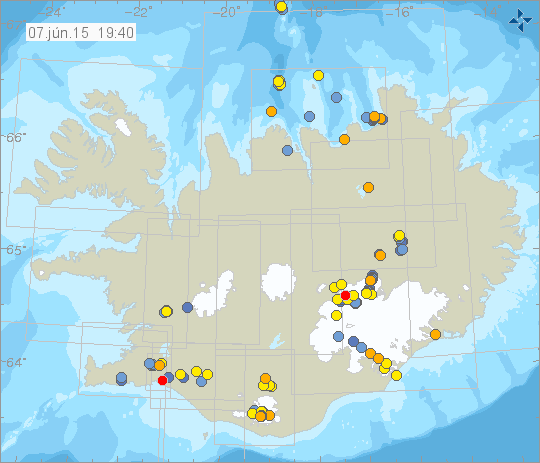
Normal earthquake activity in Iceland at the moment. Copyright of this image belongs to Icelandic Meteorologist Office.
At the moment the earthquake activity in Iceland is within normal background levels. Minor earthquake activity is almost always taking place in Iceland, there are few days when no earthquakes happen, but those days are rare and it is long between them. At the moment there is nothing to report in terms of the activity in Iceland.
Work schedule
This summer I am working Monday to Friday from 08:00 to 16:00. This means if anything happens I won’t me aware of it until I get back from work.
Donations
Please remember to support my work with donations. They help me work on this website and keep my alive. I have found out that food is expensive in Iceland and over the past two years that price has only gone up and it continues to do so. This means the budget I used in Denmark for food is not enough in Iceland (I have adjusted the plans, that type of living is going to be a challenge for the next 9 – 11 months when I am going to be living in Hvammstangi, Iceland). I am now close to getting completely broke. Most of my working income is going to pay up my debt (what I get of it, since I pay full tax [37,30%] of it in Iceland). I hope to be finished paying up all my debt in October. Thanks for the support.
Article updated at 20:48 UTC.
Article updated at 23:04 UTC.
